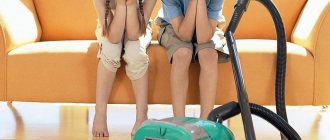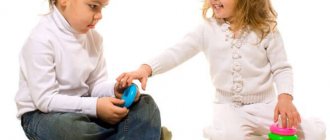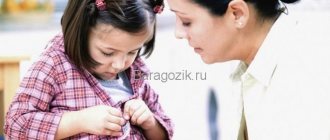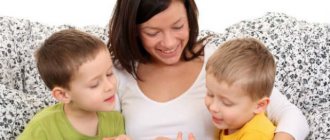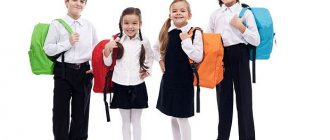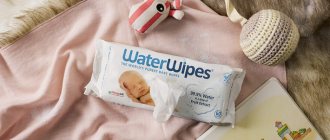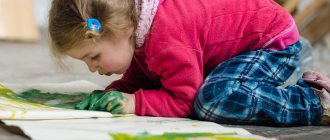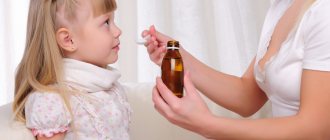Some hardening rules
According to many experts, hardening a child should begin even when he is in the womb: for this she needs to spend more time in the fresh air and periodically take a contrast shower.
Hardening through air baths can begin literally a week after the baby is born.
After three months, you can already do wet wiping. For this procedure, a soft mitten must be moistened in water, the temperature of which is 37 ° C. Gradually, the degree must be reduced so that at the end of the baby’s first year of life it is 25 ° C.
After this, you can start dousing. It is good if the procedure is carried out in the summer, when it is dry and warm outside, using a watering can or shower. It should take no more than 2 minutes, and the water temperature should not be lower than 36° C.
The temperature of the water for dousing should gradually decrease to 20 ° C. It is very useful to rub the body well after performing the procedure.
An important fact is that hardening children with cold water is effective only when cool water is poured over a warm child. If you bathe your baby every day in water whose temperature is 37°C, then this is also very beneficial. Children can swim in the sea from the age of 3 years.
Consultation for parents “Toughening up children 3–4 years old at home”
Maria Muraleva
Consultation for parents “Toughening up children 3–4 years old at home”
Consultation for parents
«Hardening children 3-4 years old at home«.
Those whose parents began to harden them from the first days of life will undoubtedly find it easier to study; they will not have to miss classes due to frequent runny noses and sore throats. But even by starting to harden a child at three or four years old and even at five or six years old, you can accomplish a lot.
Hardening procedures should also be included in the child’s daily routine with the same obligatory nature as eating, sleeping, and walking . We offer the following schedule.
In the morning - an air bath for 15 minutes; We recommend doing gymnastics for 6-7 minutes of this time.
After an air bath and gymnastics - wash up to the waist with water, the temperature of which is 16-14 degrees, and if water procedures have not been carried out before - 27 degrees.
Before and after washing, gargle. In the first days with warm water - 36-33 degrees; every 5 days, reduce its temperature by 1 degree, bringing it to 18-16. This procedure is especially useful for weakened and often ill children. The initial water temperature is the same for them, but it must be reduced more slowly - every 7 days. If the child is sick, do not stop rinsing, but the water temperature should not be reduced. It is even better to gargle with warmer water - one degree higher than before the disease.
The most favorable time for sunbathing is from 8 to 11 hours, lasting up to 30 minutes, but in two steps. The child lay down in the sun for 5-15 minutes, then rested in the shade and again in direct sunlight for 5-15 minutes.
For a seasoned child, morning washing up to the waist can be replaced with a general douche or shower; or, getting out of bed, let him wash himself and wash himself to the waist, and douse himself after a sunbath.
Foot contrast baths - after a nap.
This procedure can be replaced by dousing the feet. The initial water temperature is 28 degrees, lowering it every 8-4 days (for weakened children - every 7 days , bring it to 16 degrees.
All hardening procedures are best carried out in the morning and afternoon, around 9 a.m. and 3 p.m. Studies have shown that at this time of day, children develop better adaptive reactions to temperature fluctuations.
Basic rules for hardening a child
1. You can start hardening at any time of the year.
2. Hardening is effective only when it is carried out systematically; Without constant reinforcement, the results achieved decrease.
3. You cannot sharply increase the duration and strength of hardening effects . Violation of the principle of gradualness can cause hypothermia and illness in the child.
4. Hardening procedures cannot be started if the child is sick.
5. The effectiveness of hardening procedures increases if they are carried out in a comprehensive manner.
6. The child should like the procedure and evoke positive emotions.
Together with mom and dad
It is known that children love to imitate adults, and it will be very good if parents use this ability of the child in order to instill in him a strong habit of gymnastics and hardening procedures . parents can do morning exercises !
Special observations have established that in children who even only three times a week (in autumn and winter, dressed accordingly)
perform gymnastic exercises in the air, the activity of the bacterial flora of the nasopharynx decreases, in other words, they begin to be less threatened by acute respiratory diseases.
By the age of 4, the child is already noticeably more resilient than in the third. He can, for example, walk continuously for 20 to 40 minutes. Get him used to walking! A walk with mom and dad outside the city, to the park, will leave him with a joyful impression and will be very useful.
One of the most favorite summer activities for children of this age is cycling. At 3-4 years old, children can easily master a three-wheeled vehicle, and from the age of 5, two-wheeled ones. The duration of continuous cycling is from 15 to 30 minutes.
In winter, children are always attracted to sledding down the mountains. Very good! Let only the child, according to the well-known Russian proverb, love to carry a sled: make sure that he himself goes up the mountain with it! This way he won’t get cold, and physical training will be more effective.
From 4-5 years old, teach children to ski ; first, stand on them correctly, then walk without sticks, and only when they have mastered this skill well, can you hand them the sticks.
A 4-5 year old child can also be put on skates. At first he will get tired after 10-15 minutes, but the more confident he begins to feel on the ice, the longer he will be able to skate - 40-60 minutes (with breaks every 20 minutes)
.
Bathing and swimming.
Swimming in open water is the most effective hardening procedure . Many parents are now successfully teaching infants their home Young children But if your child isn't a swimmer, use the summer to teach him how to float.
Of course, the baby can start swimming at an air temperature of at least 25 degrees (if he is seasoned - at least 24 degrees ), on windless days and only in a clean body of water, with a gently sloping sandy shore, where there are no snags, algae, or stones. Teach him to calmly enter the water , don’t be afraid to open your eyes in the water. Let him play with the ball, try to plunge into the water, and you, standing next to him, help him maintain his balance. And watch to see if he’s cold? If “goose bumps”
- Go ashore now, dry yourself off and warm up in the sun!
After the first acquaintance with water, task games are already possible to prepare for swimming.
"Get it"
.
The child must quickly find a toy or stone placed on the bottom (in shallow water, of course)
.
"Who is faster"
. Enter the water up to your waist, turn to face the shore and, on command, quickly run to the shore.
"Who is taller"
. Sit down and jump out of the water as high as possible.
"Hide Underwater"
. Plunge headlong without covering your nose and mouth with your hands.
First explain to your child how to breathe properly in water. Let him, after taking a short breath, lower his face into the water and exhale slowly through his mouth, as if blowing on hot tea, but so that small bubbles form on the surface of the water. On the count of "one"
inhale over the water, at
“two, three, four, five”
- exhale into the water. After repeating this exercise 12-16 times, you can proceed to the next stage of preparatory exercises.
"Rinsing laundry"
. Enter the water so that it is just below your waist, put your feet apart, bend over, put your hands in the water and move them left and right, back and forth.
"Mill"
.Row with your hands in the water: one hand rows, the other sweeps through the air.
"Float"
. While standing in the water, take a breath, hold your breath, sit down, immersed under the water, clasp your knees with your hands, and press your chin to your chest. The water will push the baby to the surface.
"Jellyfish"
.
After the baby learns to do a “float”
, after completing this exercise, spread your arms and legs to the sides.
"Scissors"
. Sit near the shore in shallow water and move your straightened legs up and down.
If within a few days the child becomes comfortable with these exercises and does them with pleasure, try placing his chest on a rubber circle with his arms extended forward. By kicking the water from top to bottom, balance is maintained, and the child floats. At first, without immersing your face, then exhaling into the water, and to inhale, turning your face to the side.
The next stage is to learn to lie on your back. Let the child, standing with his back to the shore, slowly sit down so that his chin touches the water, maintain balance with his arms extended to the sides, then tilt his head back, plunging the back of his head into the water and gradually taking a lying position. Helping himself with movements of his hands, he will lie on the water.
If this doesn’t work out right away, it doesn’t matter; at first, lightly support the beginning swimmer.
All that remains is to learn how to slide on your chest. Having entered the water, the child should turn to face the shore, sit down, extend his arms with palms down and, after inhaling, push off from the bottom. Show him how to swim to the shore in a position resembling an arrow; then teach him to alternate rowing with his arms and quick movements with his legs.
The child’s thermoregulatory mechanisms are trained under the influence of both strong, but short-term cooling and relatively weak, longer-term cooling. In addition, researchers have found that hardening is most effective when not only individual areas of the body are cooled, but the entire body. This means that contrasting foot baths or douses alone, for all their benefits, will not give the maximum effect. If you want your child to grow up strong, use the whole complex that we talked about!
If you have been hardening your child for more than a year, you can recommend a combination of water procedures followed by air baths, first in the room, and in the summer and in the open air. After dousing or showering, do not wipe your child dry. Remove only large drops of water with light touches of a terry towel. Let it dry while remaining naked: as a result of the evaporation of moisture, the body further cools.
But you cannot allow the child to tremble. If he is cold, you need to give him a light massage, rub him with a towel. Over the course of several days, repeat the douche followed by an air bath - and the child will get used to it, no additional warming will be required.
We remind you that this is a strong procedure, and hardening cannot .
Caution, gradualism, systematicity - three principles that must be strictly adhered to when hardening a child .
What are the hardening methods?
Many people sincerely believe that the process of hardening children consists of walking in the snow barefoot or diving into an ice hole. But the goal is to strengthen the body, and not to turn a small person into a “walrus.”
There are the following methods for exposing children to cold water:
- Washing your face and hands.
- Washing your neck and chest with tap water.
- Pouring feet.
- Rubbing the body with a wet towel.
- Gargling with cold water.
- Cold and hot shower.
- Swimming in open waters.
All these procedures help strengthen the immune system, because hardening must be carried out gradually so that getting used to it is painless in the truest sense of the word.
What are the principles of hardening preschool children?
To achieve a positive result from the procedures, you must try to adhere to some rules:
- regularity in procedures. It is important to pay attention to the time at which hardening is carried out and try to comply with it;
- Hardening procedures for preschoolers should be carried out in stages. It is important not to make sharp transitions between the degree of load during hardening;
- to achieve a positive effect, hardening of preschool children should be carried out alternating general and local procedures;
- procedures must involve all elements of nature (water, earth, sun, snow, and so on);
- Hardening procedures must be comprehensive. For example, in addition to dousing with water or wiping itself, this may include: visiting a bathhouse, sauna, walking outdoors, etc.;
- It is important that the hardening of preschoolers takes place in a positive way and evokes only positive emotions in them.
Basic hardening methods
Hardening can be carried out using two methods: rubbing and dousing. It is preferable to start with rubdowns, because they are much better tolerated by people. Pouring cool water is a more complex method. In order for the process to bring the expected benefits, the procedure must be performed correctly.
Rubbing process
For the procedure, you need 2 towels, one of which is soaked in cool water. After wiping the child with a wet towel, you need to wring it out and wipe the child’s body again. You need to start from the legs, gradually moving towards the heart. Then rub your arms, stomach and chest. The same scheme is used when rubbing with a dry towel.
Every 7 days you need to lower the temperature by 2 °C. If cold rubbing does not lead to a deterioration in health, you do not need to rub your baby with a dry towel. In this case, you can allow the drops to evaporate as they dry, or you can rub the body with warm palms.
Cold water pouring process
After the baby gets used to cold water, you can move on to the dousing procedure. You can do this using a shower without a sprinkler:
- First, the water is directed to the back of the head, from where it gets behind the ears, flowing down the back of the head and back. After this, the jet is directed to the front of the body, also starting from the neck.
- Very good reviews about contrast douches. They start with cold water, then the temperature is sharply increased to hot. This action is repeated 3-5 times, and the degree of cold water must be reduced slightly each time. The procedure must be completed by dousing with cold water.
- Pouring is usually performed in the morning, since a procedure performed in the evening can interfere with a restful sleep.
Preparation for hardening
So, my child was 3.5 years old when we started dousing with cold water. My daughter was diagnosed with bronchial asthma, and we inhaled hormonal drugs twice a day. In addition, every time the girl became slightly hypothermic, cystitis occurred, accompanied by urinary incontinence and a rise in temperature. The last time this happened was when my daughter stamped her feet a little in a cool river in the summer.
Tolkachev's method, contrary to generally accepted recommendations, suggests starting dousing quite abruptly. For those children who often get sick, the generally accepted rates of hardening do not bring any benefit, since they are designed for healthy children. Constant exacerbations of chronic inflammation and associated infection nullify all previous work on hardening. Therefore, there is a real sense in a relatively abrupt transition to cold douches (although Tolkachev’s system fully provides for flexibility). This is especially important for patients with bronchial asthma, since it is during sudden exposure to low temperatures that the hormone adrenaline is released into the blood, which dilates the bronchi. Such a douche can even stop an attack of suffocation.
In order to take decisive action, it was necessary to study the methodology and plan the actions after the douches: running, massage, dressing. This sequence is important because it prevents the child from becoming hypothermic and falling ill from inept hardening. In addition, contrary to the opinion that after dousing one should rub the body with a towel, Tolkachev firmly states that this reduces the hardening effect. Running, massage and getting dressed - this is enough after the cold water.
Before I started hardening children with cold water, I had to try it on myself. Firstly, only after experiencing these unforgettable sensations of dousing myself could I give my daughter practical advice on how to cope with fear. Secondly, it was an opportunity to serve as an example to my children.
I tried dousing from the shower, from the basin, and even cold baths (personally, the latter was especially scary for me). The baby watched me with admiration and excitement. I can’t help but write what feelings hardening by dousing causes. This is an incredible boost of energy; overcoming your own fear is, to a certain extent, a feat. When this happens, you feel that you are not yet a completely weak-willed matter, but you can actually do a lot and do a lot. Needless to say, the satisfaction that this realization brings. To some extent, dousing can serve as psychotherapy for depression from knowing your child’s illness.
A parent's example is good, but not enough. My daughter still continued to be afraid when I reminded her that she too would soon try hardening. Videos from the Internet came to the rescue, where children were doused with cold water even while standing barefoot in the snow. These videos worked as an excellent motivation for my child.
People advise that at the beginning of the practice of hardening with cold water, think about what you will stand on during this water procedure. There is an opinion that if you stand barefoot in a cold bath or on the ground, you can become hypothermic and get sick. I cannot speak about the “scientific” nature of this opinion. But I decided to play it safe. My child’s tendency towards cystitis pushed me towards this even more. For dousing, I prepared tourist foam, on which I then placed the baby. It really was calmer that way.
At the initial stage of the douches, the homeopathic drug aflubin, which we took for preventive purposes, gave me considerable peace of mind (not an advertisement*).
